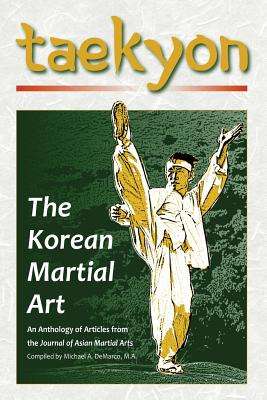When people discuss Korean martial arts, they rarely mention taekyon. They are usually totally unfamiliar with the name because there hasn't been much written about it. The four chapters in this anthology give an excellent overview of taekyon as a system noted for it's dance-like qualities and combative style, especially for leg techniques. Taekyon stands unique as it represents most closely to a pure Korean martial tradition. Chapter one by Stanley Henning gives a detailed overview of martial arts in Korea. From the beginning, Korean martial arts were intertwined with those of China. Even the historical references to Korean martial arts are all in Chinese. The author concludes that traditional Korean martial arts are but a vague memory, with taekyon being the sole survivor. In the next chapter, Robert Young skillfully presents what is known about taekyon. With over 150 years of verifiable history, taekyon is the most thoroughly documented of Korean martial arts. Its skills and techniques greatly differ from those of other modern Korean styles. It is the only plausible candidate for the descendant of ancient subak. This well-researched chapter includes theory and techniques and lineage chart. Dr. Willy Pieter expands upon the historical development of Korean martial sports as presented by Young. There is an emphasis on the hwarang ("flower boy") and their presence in Korean culture and martial traditions in particular. The etymology of Korean martial systems are questioned. The final chapter by Yung Ouyang offers a fuller picture of what taekyon represents as a moving art. Traditionally, taekyon was a game as well as a martial art, so many did not credit taekyon for its combative elements. It has largely been ignored by those interested in the fighting arts. It is gaining recognition as a legitimate heir to the traditional Korean martial arts, but is also undergoing influences from Japanese traditions and Western sports. Taekyon deserves to be recognized for its uniqueness among the martial arts of Asia. This anthology will serve as solid reference for all interested in the Korean combative traditions, and especially taekyon for its aesthetic appeal as a form of dance and graceful yet powerful combative method.










